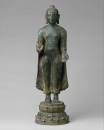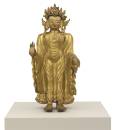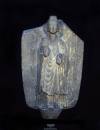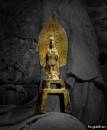侧边栏
这是本文档旧的修订版!
旃檀佛像(Sandalwood Buddha)
旃檀佛像即释迦牟尼立像,体姿是双脚并立莲花台上,左手自然下垂,掌心朝外,该手印叫“与愿印”,表示佛陀能满足众生愿望,使众生所祈之愿都能实现。右手曲肘上举于胸前,手指自然舒展,掌心向外,该手印叫“无畏印”,表示佛陀能使众生安心,无所畏惧,佛有救济众生的大悲心愿。传说佛在世时,印度优填王用旃檀木(檀香木)雕造佛像,以后,不管材料如何,凡这种样式的造像都称为旃檀佛像。
外文描述
The buddha is standing on a lotus pedestal. The right hand is raised in front of the chest and faced outwards away from the body. It has two common meanings. It is said that the raised right hand of Protection Buddha statue represents a shield overcoming fear. Courage protection from fear, delusion, and anger are some of the significance of Abhaya Mundra (Protection Mudra, 无畏印); The left hand falls downward whose palm is facing towards the viewers. This signifies granting a boon to mankind. The meaning of Varada Mudra (Gift Giving Mudra, 与愿印) is to get rid of negative energy and ward off evils.
相关页面
造像特征
佛陀双脚并立莲花台上,左手自然下垂,掌心朝外,施与愿印; 右手曲肘上举于胸前,手指自然舒展,掌心向外,施无畏印.
深度阅读: ……
参考文献:
……
















